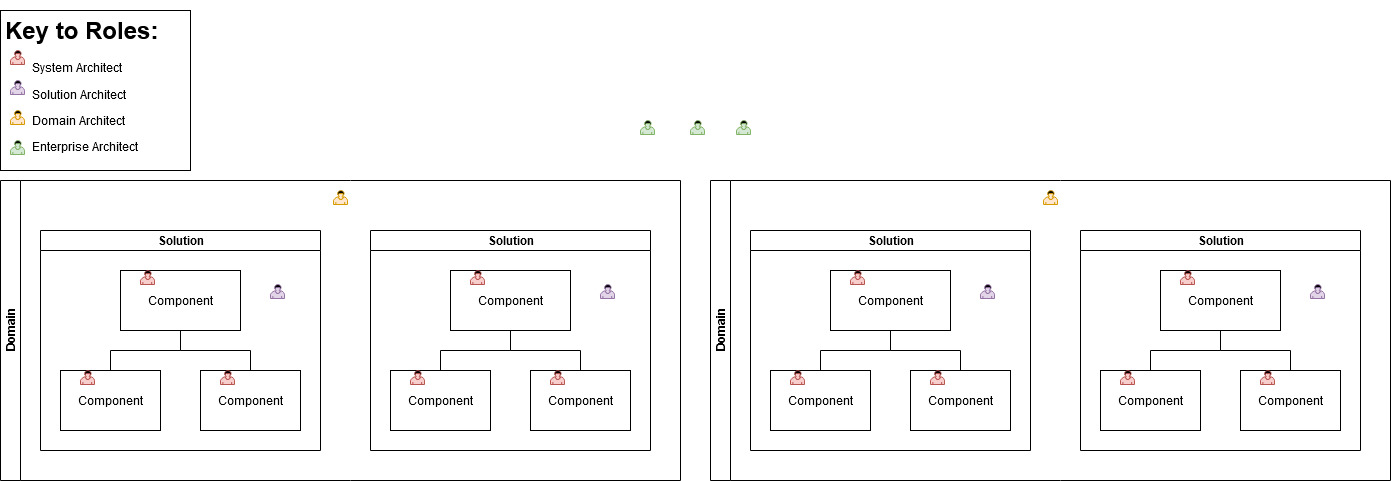Blog
Others assume that no matter what type of architect is encountered, that architect automatically has a deep knowledge of every technology, platform, system, component, vendor API, programming languages, etc, etc in existence.
Still others struggle even to justify the existence of any architectural role, as they see significant overlapping with the tasks of a Business Analyst and a Process Engineer.
So lets shed some light on this subject.
Casting an eye over various sources such as the Scaled Agile Framework's Full Safe portfolio view, it is clear that there is a scope hierarchy to architectural roles in IT. This is a view which I agree with.

In my professional opinion the individual roles are defined as follows:
| Role | Scope |
| System Architecture |
|
| Solution Architect |
|
| Domain Architect |
|
| Enterprise Architect |
|
In my experience, each role is as complex and demanding as any other. The roles appear as peers to one another as opposed to a ranking i.e the relative positioning of the various architectural roles should not be interpreted automatically as a responsibility hierarchy.
It is unlikely that an enterprise architect can produce good systems architecture and vice versa. It is also a myth that a domain architect has more impact than a solution architect. However it is often the case that an architect operating within one scope level can also effectively perform as an architect in a neighboring scope. For example, a systems architect can often perform adequately as a solution architect. An enterprise architect can support the organisation with domain architecture input. In this way, smaller organisations can compensate for a shortfall in personell by allowing individuals to act in more than one architectural role.
By its very nature the discipline of architecture in any industry has a significant impact on time, effort and cost. As it is in IT. Each architectural role carries with it a strong influence on how the organisation arranges its systems and services. Every architectural decision comes with a strong organisation and therefore financial impact. So no matter what scope of the individual architect's focus is, that architect intrinsically owes a strong fiscal responsibility to their organisation.
It is no surprise then that in a well structured firm, as you progress through the ever-increasing scope of each role checks and balances are encountered to control that architectural role's spend demand. These controls come in the form of formal reviews at the various levels within the enterprise where the architectural vision is challenged and tested. Each architectural role is expected to be subjected to the same level of rigor and responsibility towards the firm as a whole.
In my professional experience I have noticed that within SME's of less than 1000 people, the average individual "decision spend" for an architect (at any scope level) is in the vicinity of USD 100,000. It is no surprise then that projects of USD 1m or above require a the input of team of architects making an 10 or more key decisions.
It would be interesting to note what the average USD spend cap is for an individual architect across all company-size categories. Perhaps Gartner would like to help us here?
In summary, solution architecture is just one in a group of four general scope levels of IT architecture. Each scope level is as important as any other. All roles are required for small cap and above enterprises. Given the influence and impact of IT architecture it is imperative for an organisation to have the human capital available to be able to fulfill all four roles as needed.






